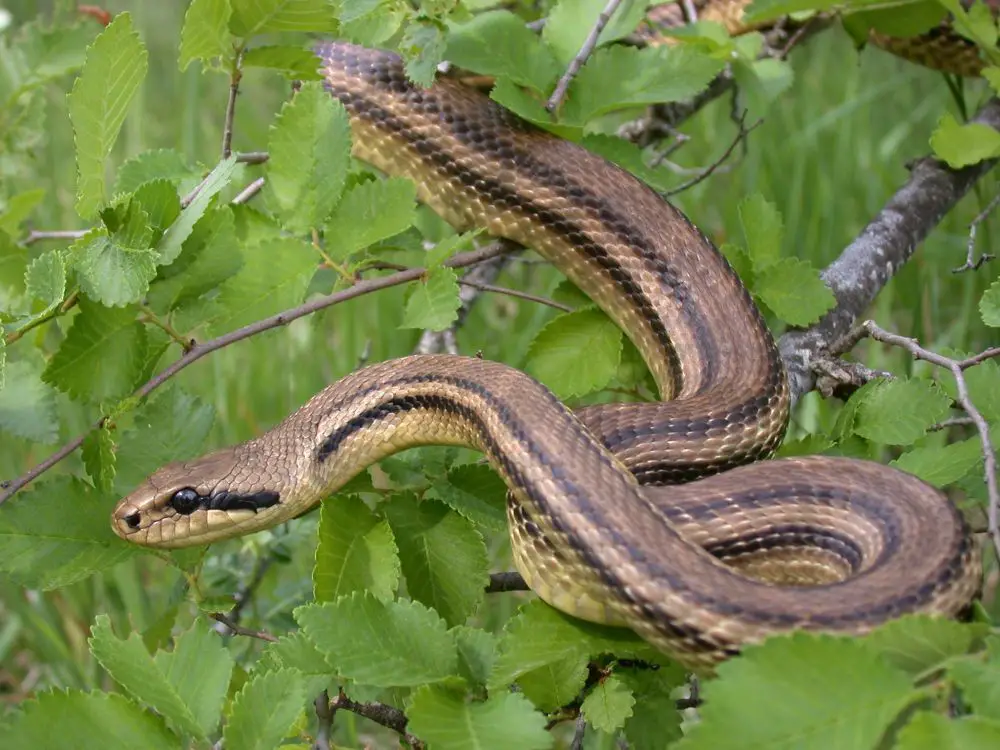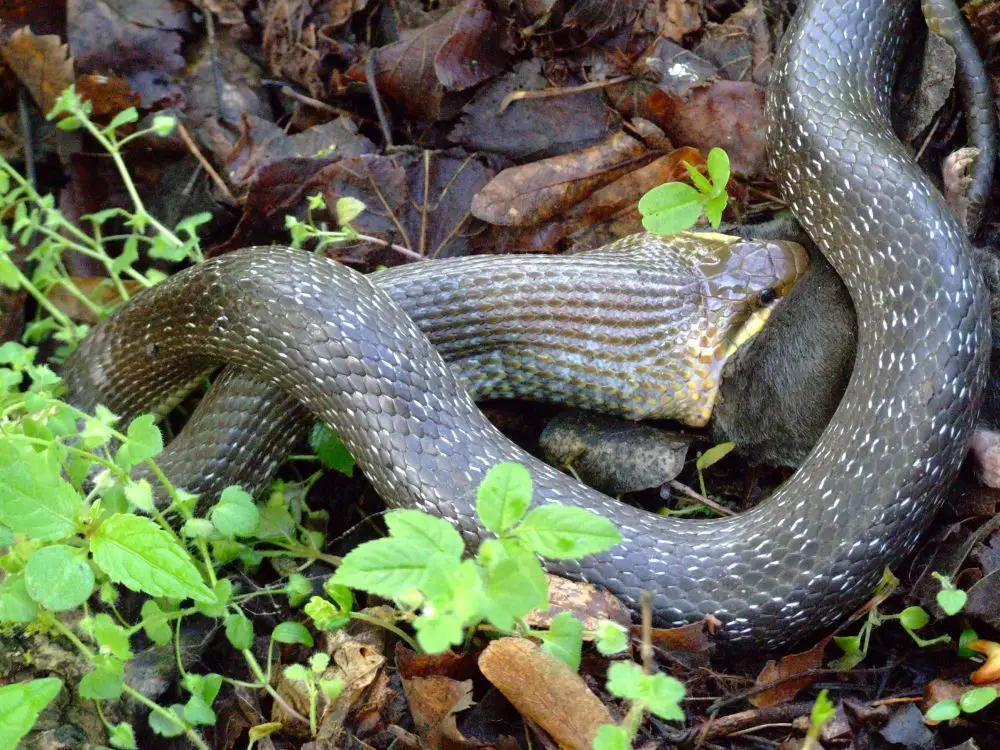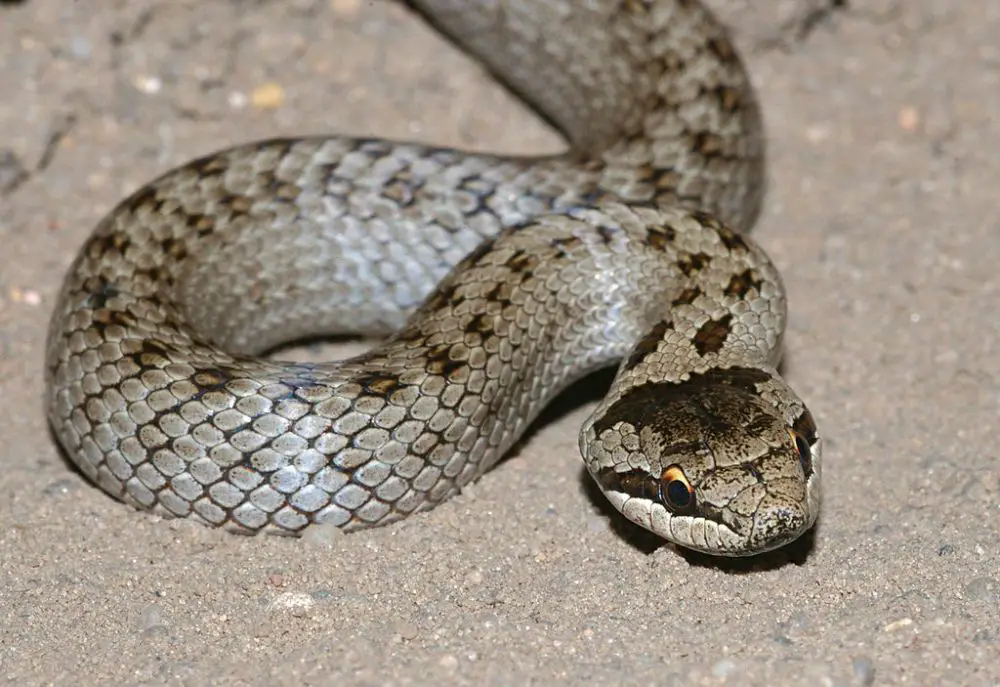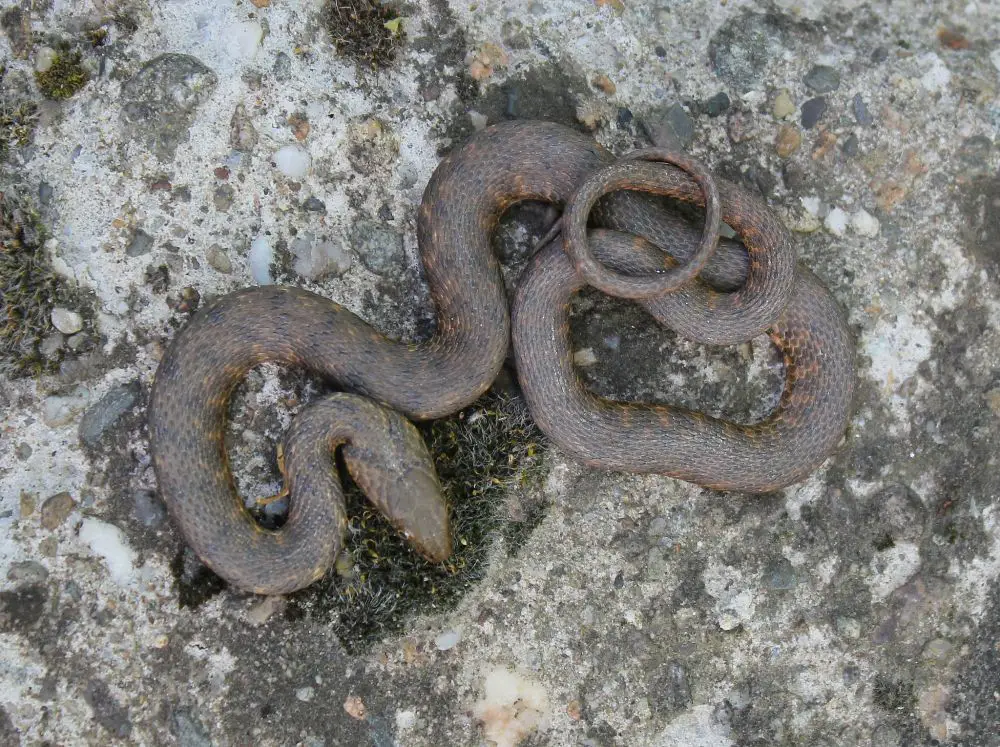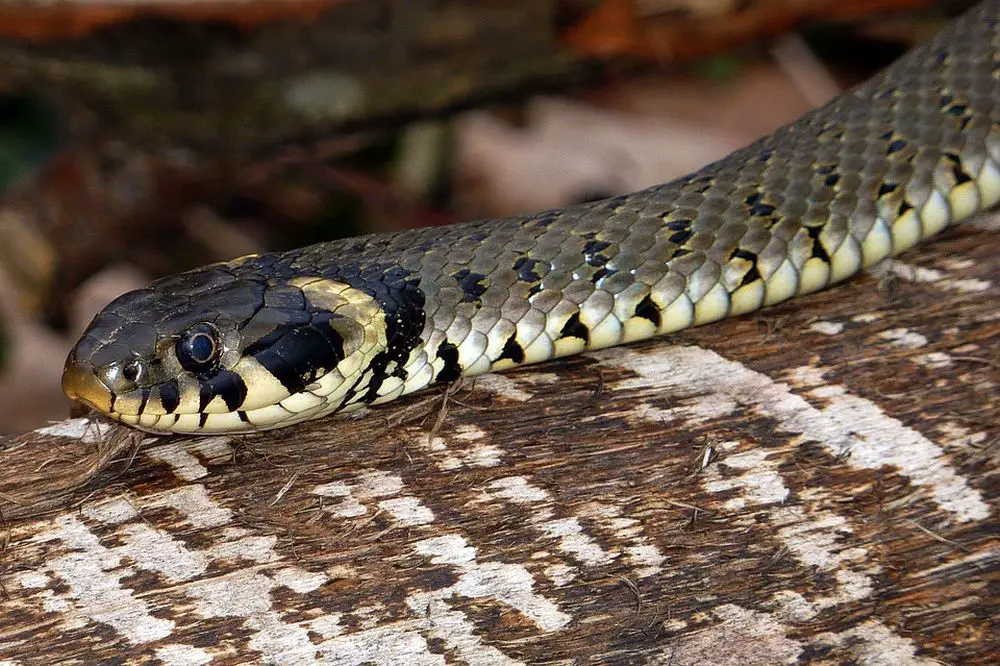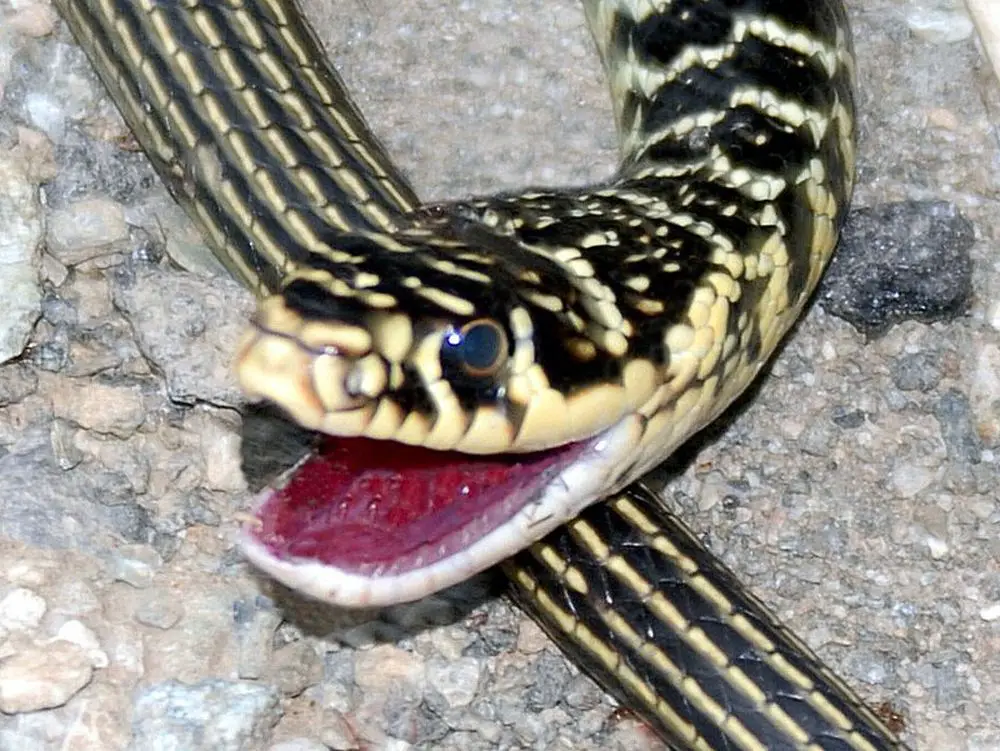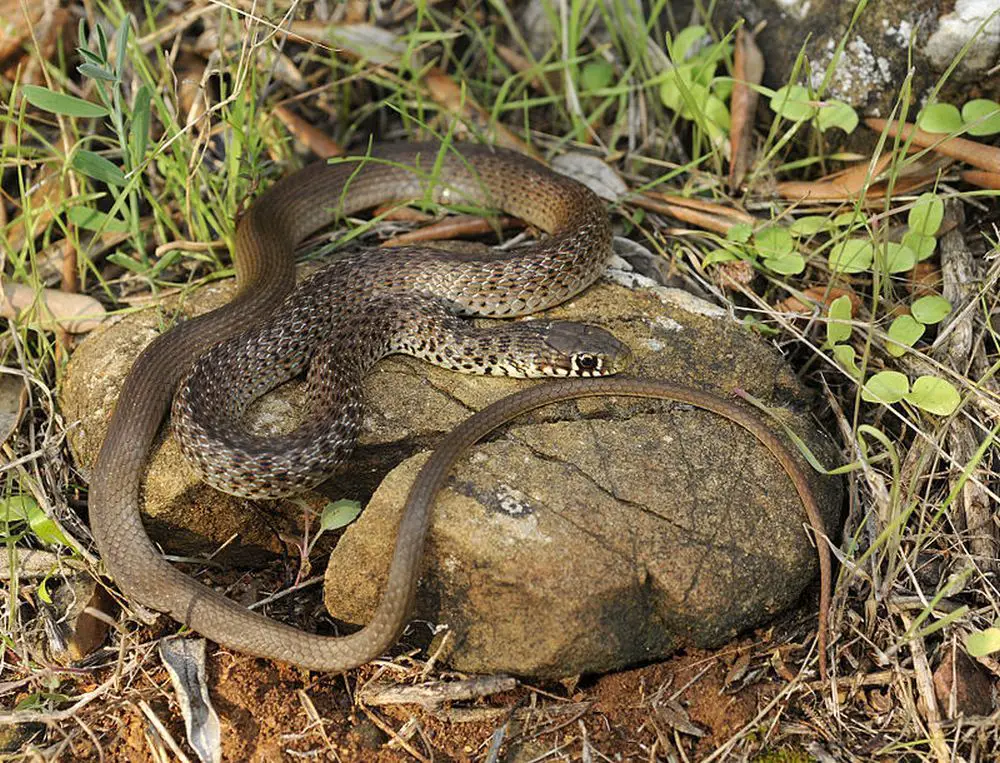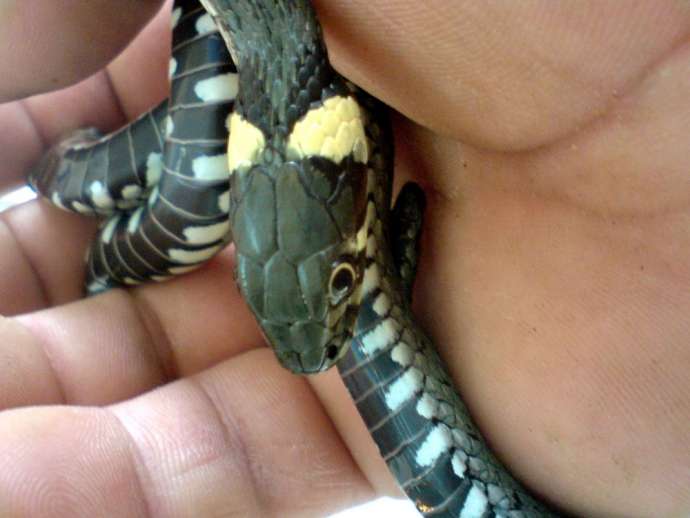August 23, 2019
Recently a hiker was bitten by a snake when she attempted to grab it. Apparently, she did so believing there were no poisonous snakes in Slovenia.
There are eleven species of snakes living in Slovenia, three of which are equipped with a venom delivery mechanisms and a fourth is considered as half poisonous, since its fangs are placed in the back of its mouth, meaning it can only deliver venom to its prey while in the process of swallowing, and is therefore not dangerous to humans.
A snake bite is rarely fatal, but has to be taken very seriously. No deaths have been recorded as a consequence of a snake bite since Slovenian independence, perhaps because in critical situations people receive the medical attention they need.
What to do in case you get bitten by a snake
Snakes are generally fearful animals and will retreat if they sense our presence. They only attack if they feel threatened, and sometimes prefer to escape rather than bite even if they are being stepped on. Their fangs are 2-4.5 mm long, which means that boots and even thicker clothing can prevent them from penetrating the skin.
Dotted fang wounds that could bleed a little or not at all are 0.6- 1 cm apart, although in a 2015 case of a horn viper biting through a tracksuit, the fang marks were an unexpected 1.5cm apart from each other. Swelling and pain occur around the wound and the skin turns blue and red along the lymphatic vessels, while local lymphatic nodes swell.
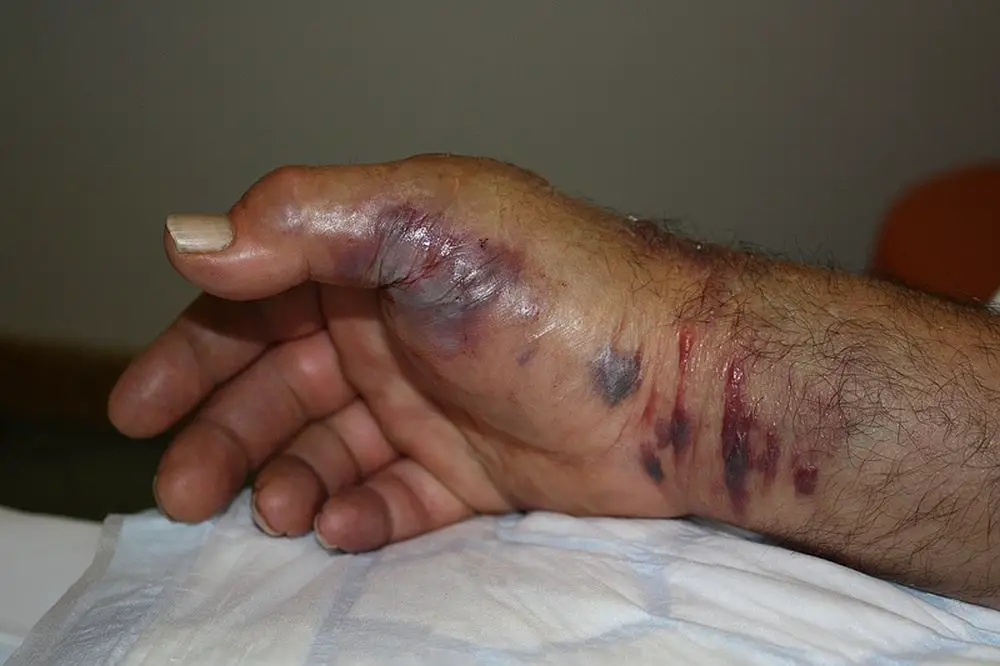
In some cases signs of general poisoning can occur, with nausea, chills, dizziness, rapid breathing and heartbeat, and even shock, although these are extremely rare with Slovenian snake bites.
If you get bitten, it is important to stay calm and lie down or adopt a semi-seated position on the ground and call the general emergency number 112. If possible, take a picture of the snake that bit you, though the medical procedures and even the antidote are the same for the bites of all three poisonous snakes found in Slovenia. If you can, cover the wound with a sterile gauze and immobilize it if possible, but do not cut or suck on the wound.
Slovenia’s poisonous snakes: Nose-horned viper, European adder and European asp
All three species of Slovenian venomous snakes belong to the family of vipers: Vipera ammodytes or a nose-horned viper (modras); Viperra aspis or an European asp (Slo: laški gad); and Vipera berus or a common European adder (navadni gad). All three are characterised by their thick bodies and short tails (with the same width of a body a non-venomous snake would usually be much longer than a viper), triangular head that is quite distinct from the neck, and vertical pupil slit, similar to cats. Slovenian vipers often have a distinctive singular or double zigzag pattern on their backs, but sometimes it disintegrates into undefined lines or completely disappears in darker to black specimens. The easiest of the three to recognise is the nose-Horned viper or modras, with its distinctive horn at the tip of its nose.
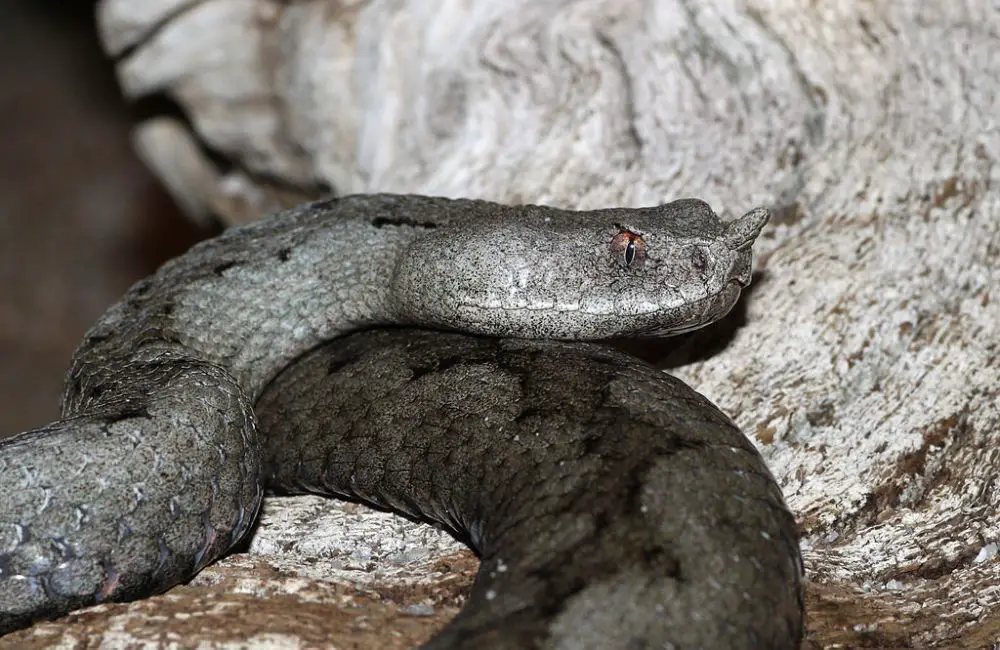
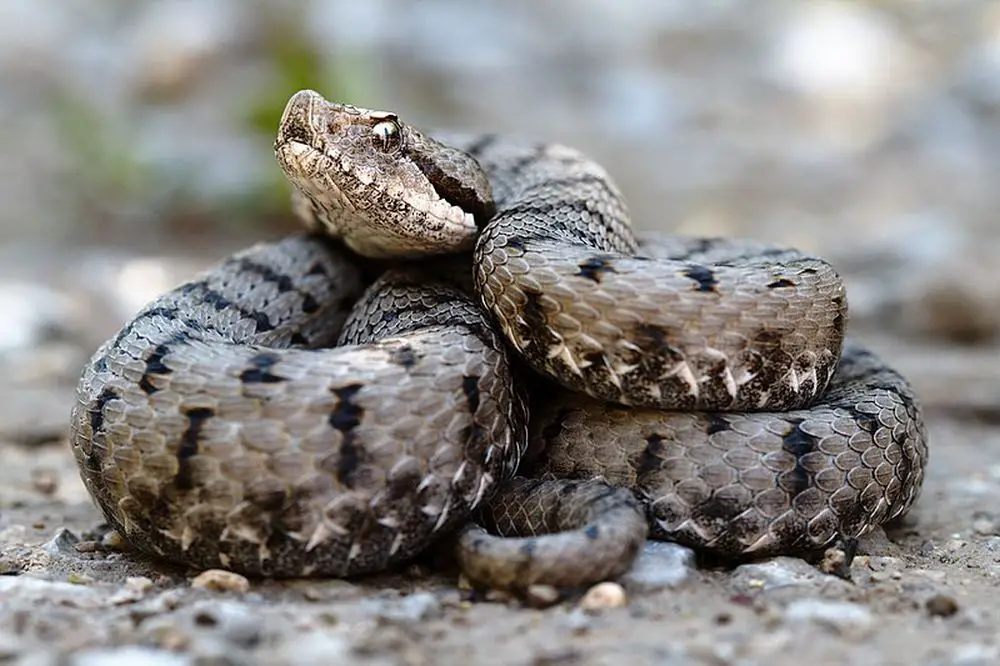
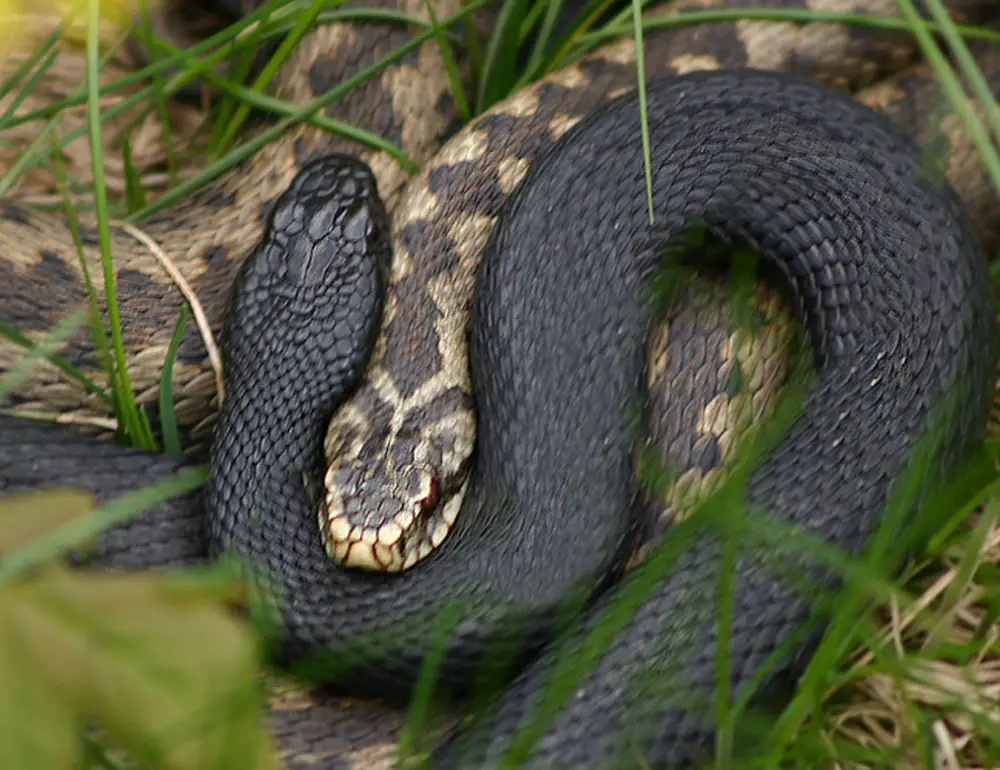
Venom comparisons:
| Snake species | lethal dose | injected amount of venom per bite |
| Cobra (Naja naja) | 15 mg | 210 mg |
| Black mamba | 120 mg | 1000 mg |
| Nose-horned viper | 75 mg | 20 mg |
| European adder | 75 mg | 10 mg |
Slovenia’s half- and non-poisonous snakes
An interesting species of snake that hasn’t been recorded since the mid-1990s is the so called European cat snake or Telescopus fallax (Slo: kačjeoka kača, also črnostrel). Although Telesocpus is in fact equipped with venom, its fangs are placed so deep in the back of its mouth that it can only inject it while already swallowing its prey. The European cat snake is therefore not dangerous to humans or any other large animals.

Non-venomous snakes can sometimes resemble venomous ones, which is unfortunate, as people scare them away from their gardens, where they should have been most welcome. Entirely without venom are:
